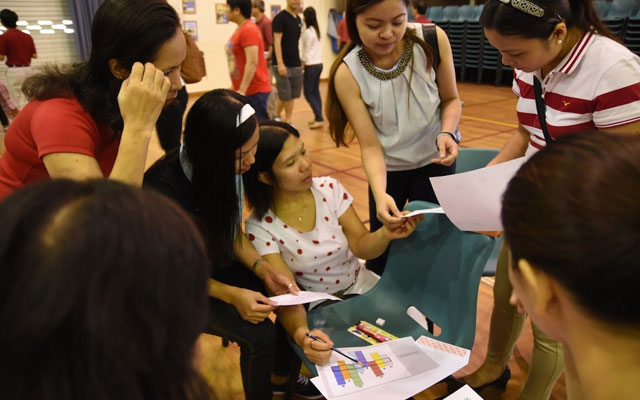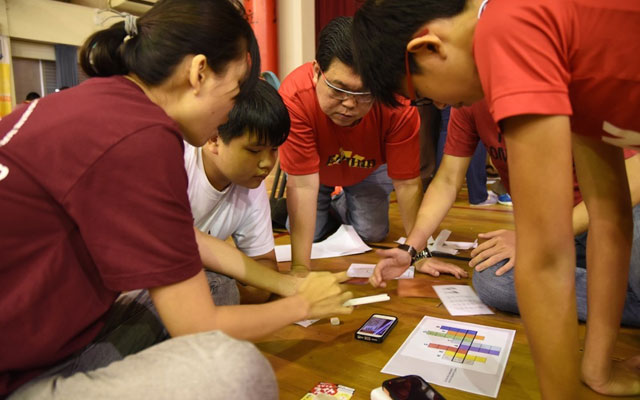Enigma – Quest for the Code Book is Nomis Piy’s latest product, a puzzle-solving escape game with a World War II theme. This indoor activity involves pitting teams against the clock to solve a series of puzzles, where the objective is to retrieve a codebook in order to decipher an intercepted enemy transmission.
Concept: This 1.5-hour escape game gets teams of participants to communicate with each other and put their heads together to decipher clues, and find sensible answers to confusing puzzles and mind-boggling riddles. Each successfully solved answer will lead them to the next clue, so on and so forth, until the objective of the game is achieved.
The rigorous brain activity involves a large amount of associative skills, lateral-thinking and creativity, where participants have to think way outside the box in order to see things from a different perspective.

MICE application: Nomis Piy can arrange this teambuilding activity for group sizes ranging from 40 to 600 people.
The game’s portability is what makes it attractive – as it can be done in air-conditioned comfort within a function room, ballroom or even in an office. The duration of the game can also be tailored to a company’s preference.
Moreover, it can be customised according to a company’s core values, mission and vision statement. For instance, Nomis Piy conducted one such escape game for a company’s workplace safety awareness week.
While a game usually ranges from one to two hours, game durations can also be tweaked accordingly. For companies with less experienced escape game players, more time is usually given. Currently, Nomis Piy has a stable of more than 10 escape games with various themes. To keep things fresh, they also design a new game every few months.
Rates range from S$15 (US$11) to S$50 per participant, but this amount depends on factors such as the size of the event, number of players, and whether venue booking or food catering is required.
Service: I was blown away by the intricacies of the puzzles. I was also partially annoyed at my own inability to solve them, and gaped at how foreign and complex each one seemed to me. Regardless, my colleague Yixin and I were fully engaged as we attempted some of the puzzles, even though we didn’t manage to successfully break the code. It also helped that Yixin was more determined than I was.
For teams that managed to achieve the objective, the sense of achievement they felt was obvious through their beaming smiles. I believe that for companies, this escape game will be an excellent indoor alternative to traditional teambuilding events.






















